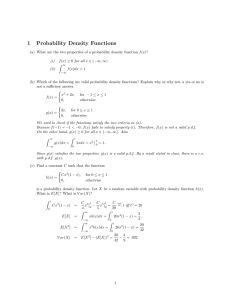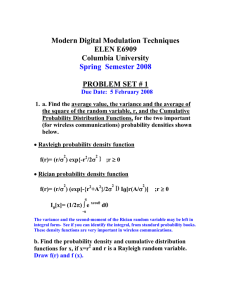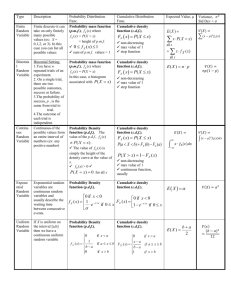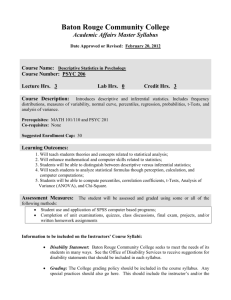Stat 330 Homework 6 Spring 2009 1
advertisement
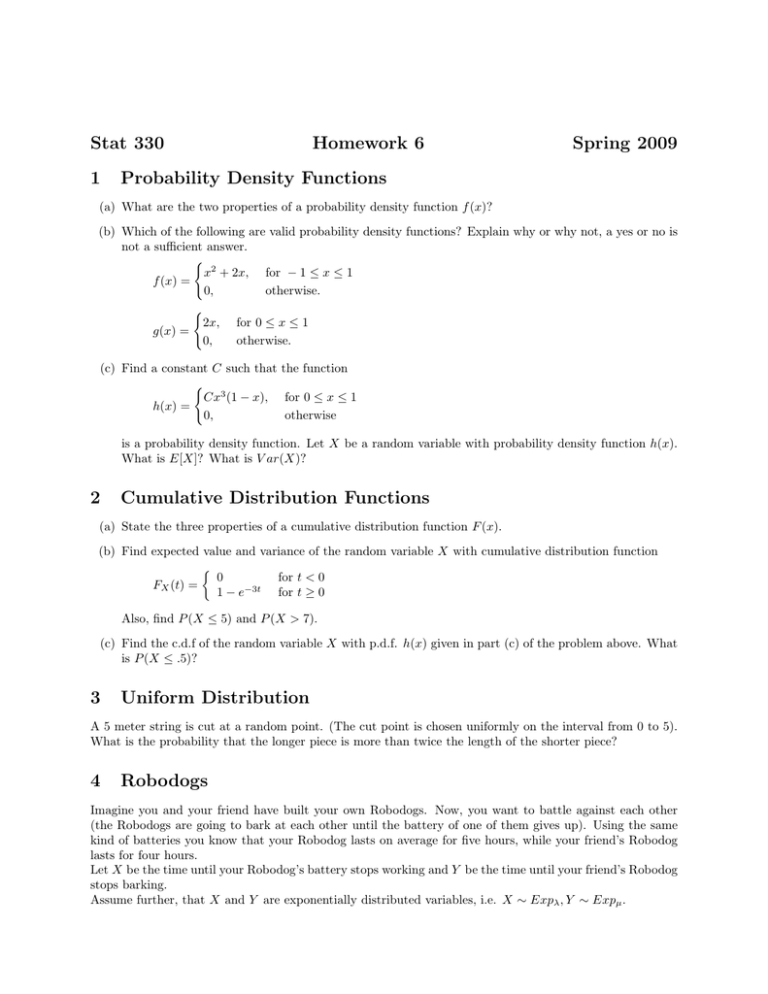
Stat 330 1 Homework 6 Spring 2009 Probability Density Functions (a) What are the two properties of a probability density function f (x)? (b) Which of the following are valid probability density functions? Explain why or why not, a yes or no is not a sufficient answer. ( x2 + 2x, for − 1 ≤ x ≤ 1 f (x) = 0, otherwise. ( 2x, g(x) = 0, for 0 ≤ x ≤ 1 otherwise. (c) Find a constant C such that the function ( Cx3 (1 − x), for 0 ≤ x ≤ 1 h(x) = 0, otherwise is a probability density function. Let X be a random variable with probability density function h(x). What is E[X]? What is V ar(X)? 2 Cumulative Distribution Functions (a) State the three properties of a cumulative distribution function F (x). (b) Find expected value and variance of the random variable X with cumulative distribution function 0 for t < 0 FX (t) = 1 − e−3t for t ≥ 0 Also, find P (X ≤ 5) and P (X > 7). (c) Find the c.d.f of the random variable X with p.d.f. h(x) given in part (c) of the problem above. What is P (X ≤ .5)? 3 Uniform Distribution A 5 meter string is cut at a random point. (The cut point is chosen uniformly on the interval from 0 to 5). What is the probability that the longer piece is more than twice the length of the shorter piece? 4 Robodogs Imagine you and your friend have built your own Robodogs. Now, you want to battle against each other (the Robodogs are going to bark at each other until the battery of one of them gives up). Using the same kind of batteries you know that your Robodog lasts on average for five hours, while your friend’s Robodog lasts for four hours. Let X be the time until your Robodog’s battery stops working and Y be the time until your friend’s Robodog stops barking. Assume further, that X and Y are exponentially distributed variables, i.e. X ∼ Expλ , Y ∼ Expµ . (a) Find µ and λ. (b) Let Z be the time until the contest is over, i.e. until one of the dogs stops barking. Z can then be written as Z = min (X, Y ). Find the distribution of Z, i.e. compute P (Z ≤ z). Hint: min (X, Y ) ≤ z ≡ (X ≤ z) ∪ (Y ≤ z); you can also assume that X and Y are independent variables. (c) Do you recognize the distribution of Z? State expected value and variance. Interpret the expected value. 2
